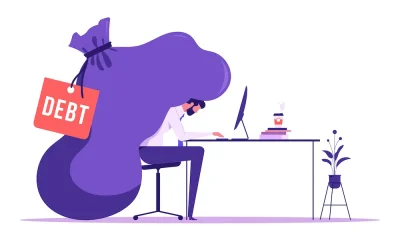Accounting & Finance
How to Improve Your Credit Utilization Ratio

Does your credit utilization ratio affect your credit score? Yes, and by as much as 30%, so your credit utilization ratio is significant.
There’s a lot you need to think about when managing your finances. Your credit utilization ratio is likely one of the last things to come to mind. However, this can play an essential role in your financial health. Here’s what you need to know about credit utilization and how to improve it.
What Is Credit Utilization?
Your credit utilization ratio is the amount of credit you use versus your credit limit. For example, if you can spend a maximum of $10,000 across all your credit cards, but your total balances are currently $2,000, your utilization ratio is 20 per cent.
Experts say keeping your credit utilization below 30 per cent is a good idea – cumulatively and per card. When you go over this, it can send red flags to the credit reporting agencies, which might, in turn, bring down your credit score.
Get More Credit
This might not be the best idea for your financial health if you’re struggling to repay your credit cards. However, it’s important to note that one of the possible ways to improve your credit utilization is simply having a higher credit limit.
The easiest way to get a higher limit is probably to get another credit card. It can then be tempting to start using that card; however, if you’re getting a card to boost your credit utilization, it’s wise to shy away from actually using it for anything.
Get Rid of Your Debt
This plan is undoubtedly easier said than done. However, it needs to be mentioned that paying down debt is one method for improving your credit utilization ratio. Budgeting is one of the best places to start if you’re looking for ways to reduce your debt levels.
By building a budget, you can identify areas where you might cut back on spending. Reapportioning your funds from expenses to debt repayment can improve your credit utilization while also saving you money on interest payments.
Explore Your Debt Relief Options
Debt relief, management or consolidation might be the next best step for people struggling to get their credit usage under control.
Unfortunately, a consistently high credit utilization ratio conveys that you cannot pay down your debt. This is both bad for you and the lenders who want to get it back eventually.
Working with a reputable debt relief can help specific consumers settle their debts in as little as 24 to 48 months.
Other options to explore include enrolling in a debt management plan (DMP) through a credit counselling agency or seeing if you can get a debt consolidation loan and use it to pay down your credit card balances.
Request a Higher Credit Limit
Another way to get your credit utilization to look better to credit reporting agencies is by requesting higher credit limits.
If you consistently make credit card payments, your credit card company is likely to be okay with raising your credit limit. This can instantly bring down your credit utilization ratio.
As with getting a new card to improve your credit utilization, this approach can be dangerous if you immediately start using all that new credit. Not only does that negate the purpose of improving your credit utilization, but it can also get you into trouble.
Pay Twice Per Month
It might seem odd, but paying your credit card bill twice monthly is another way to improve your credit utilization.
By making two monthly payments, you’re not allowing your balance to get as high when you only make one. Doing this can keep your credit utilization from spiking toward the end of your billing cycle.
Credit utilization is important because it affects your ability to borrow and your credit score. Therefore, do whatever you can to keep it below 30 per cent—the lower, the better.
There are other ways to improve your credit score, too, including paying your bills before the payment due date, not going into unauthorized overdrafts, and limiting the number of credit score inquiries, as these may send the signal that you’re in financial difficulty.






